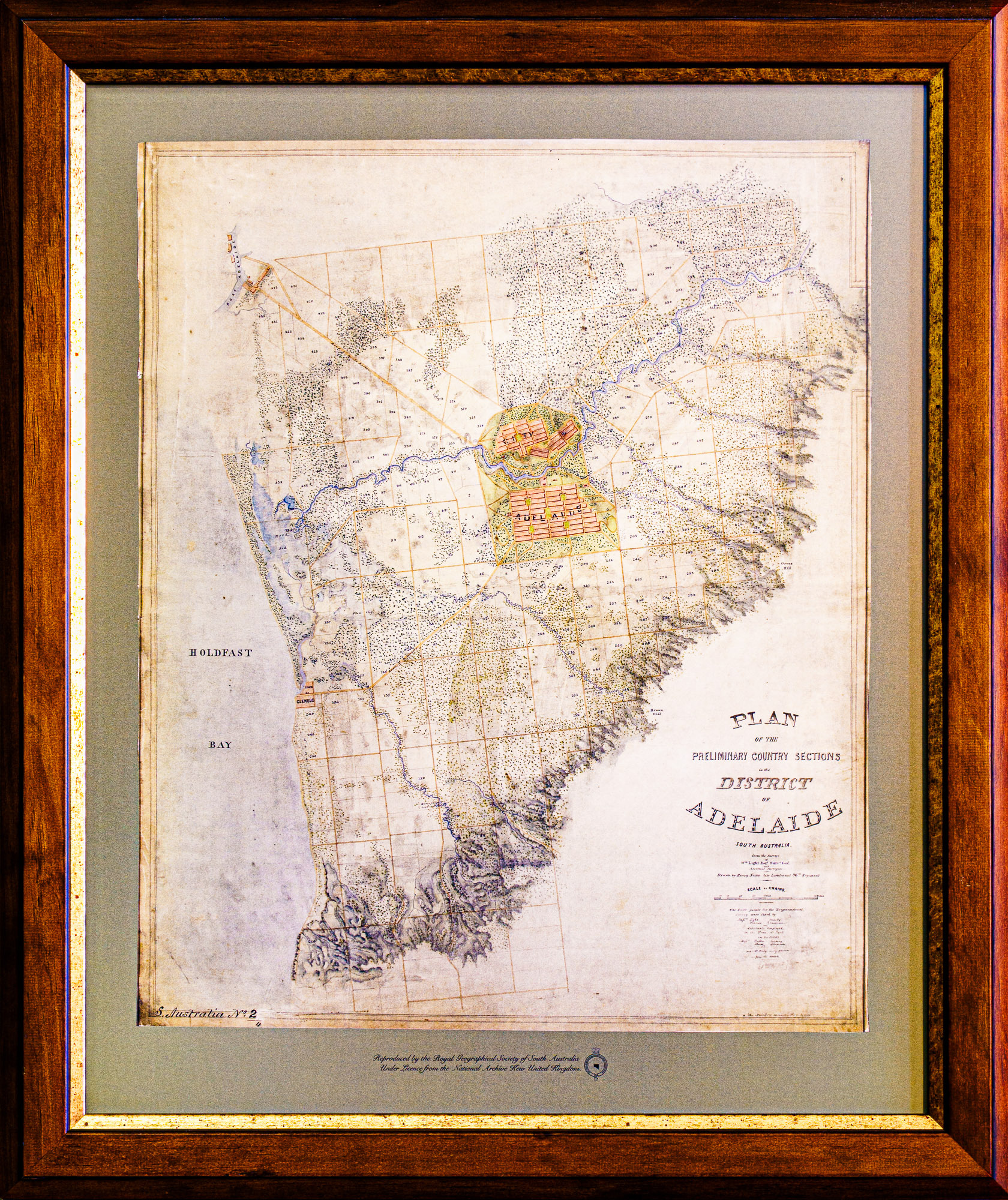
At the time this map was drawn Col. William Light had already selected the site for the City Adelaide and designed its layout but the detailed survey of the street and allotments was on going.
This map, drawn by Nixon in 1838 from information about the Preliminary Country Surveys undertaken by Light, shows the almost Elysian appearance of the Adelaide Plains, with creeks and the river delineated with vegetation. It also shows the terrain over which the Europeans had their first encounters with the Aboriginal people and the effect of thousands of years of indigenous occupation of what became known to the Europeans as the Adelaide Plains.
This view of the Adelaide Plains also demonstrates part of the logic behind Light’s choice of the site of Adelaide, with the city surrounded by sustaining rural sections and a safe harbour within reasonable proximity.
(The original of this map is located in the National Archive Office, London).